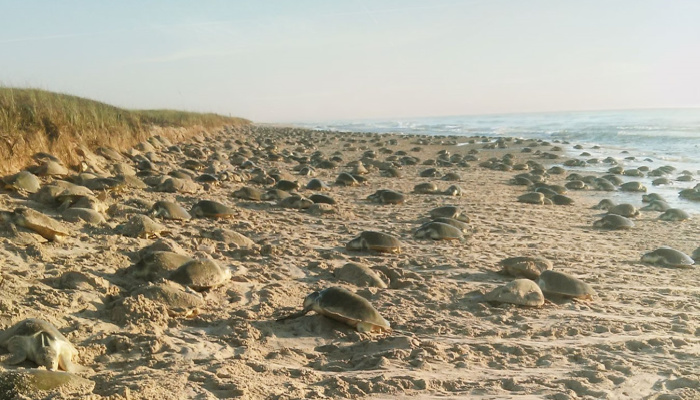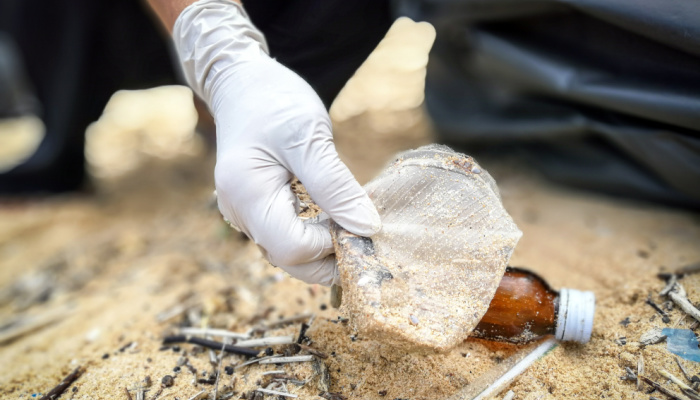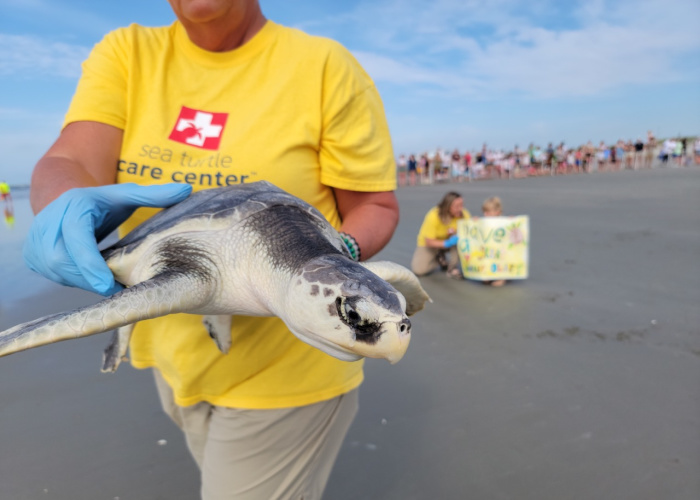Our beloved Kemp’s ridley, the smallest sea turtle in the world, sets forth to lay her clutch of eggs and hatch the next generation of the world’s most endangered species of sea turtle. This year, for World Sea Turtle Day, we have the power to help her out.
A SAFE Space
In 2015, the Association of Zoos and Aquariums (AZA) established their program, Saving Animals From Extinction® (SAFE), which harnesses the expertise, resources and reach of AZA-accredited zoos and aquariums to prevent species extinction in the wild. There are 32 SAFE programs, including the AZA Sea Turtle SAFE Program, which launched in 2019. AZA Sea Turtle SAFE works closely with the State of the World’s Sea Turtles (SWOT), a nonprofit organization working to accelerate sea turtle conservation by compiling and organizing data from across the world and providing it publicly. Together, these organizations are supporting sea turtle conservation internationally.
The species focus of AZA Sea Turtle SAFE are (you guessed it) sea turtles, but with a spotlight on Kemp’s ridley and Eastern Pacific leatherback sea turtles. At one time, the Kemp’s ridley sea turtle was on the brink of extinction, but thanks to fisheries regulations, nesting conservation efforts and major strides in community education over the past forty years, their numbers began rebounding. Despite this, they are still critically endangered!
You Have “Arrived” at Your Destination
This species, typically nesting on beaches in the western Gulf of Mexico on the shores of Texas and Mexico, displays a unique nesting behavior called an arribada. Translating to “arrival,” an arribada is a synchronized, large-scale nesting event where hundreds to thousands of Kemp’s ridleys emerge from the ocean to lay their eggs along a specific span of beach.
 Hundred's of Kemp's ridleys are seen at an arribada nesting event. Photo credit: Gladys Porter Zoo
Hundred's of Kemp's ridleys are seen at an arribada nesting event. Photo credit: Gladys Porter ZooAs you can imagine, this is a wild sight! But it leaves these creatures susceptible to threats, such as predation from other wildlife or poachers harvesting the eggs. Since these nesting beaches are managed by multiple organizations, it is important to educate and support the local community in specialized nesting conservation.
AZA Sea Turtle SAFE supports the SWOT small grants program, helping to fund Kemp’s ridley nest conservation efforts by Gladys Porter Zoo and Rancho San Jose in Mexico, the Gulf Center for Sea Turtle Research at Texas A&M University Galveston and Sea Turtle, Inc. in the United States. Each group tailors its nesting conservation efforts to the needs of the local community.
Whenever you’re in an area with nesting sea turtles, you can join the effort by keeping the beachfront clean, removing toys and beach gear, filling in holes and knocking down sand castles. It is also important to steer pets and children away from sea turtle nests (which are often marked) and report a sea turtle or unmarked sea turtle nest if you spot them on the beach.
 Remove litter from the beach to support sea turtle conservation.
Remove litter from the beach to support sea turtle conservation.A Turtle-y Cool Adventure
It’s common to spot Kemp’s ridleys as far north as Massachusetts and as far south as the Yucatan Peninsula! So why do they travel so far and what does that mean?
All sea turtle species are highly migratory, spending most of their lives traveling great distances for warm water, foraging grounds or in pursuit of their nesting beach. Kemp’s ridleys hatch on the beaches in the western Gulf of Mexico, make their way to the open ocean and spend a few years swept up in the ocean currents foraging for food.
Along with the natural predators they encounter on this adventure, these sea turtles face an onslaught of dangers caused by human impact, such as commercial fisheries interactions, boat strikes, hook-and-line injuries and marine debris ingestion or entanglement.
Our personal choices are an important contribution to sea turtle conservation. Actions as easy as purchasing sustainable seafood, being a responsible boater and fisherman and, when possible, avoiding single-use plastic promote healthier oceans for our Kemp’s ridleys.
 Jo, a Kemp's ridley, admitted for hook-and-line injuries.
Jo, a Kemp's ridley, admitted for hook-and-line injuries.The Frozen Ones
Unfortunately for some, rehabilitation becomes part of their adventure. Along with injuries caused by humans and predators, Kemp’s ridleys can also fall victim to abrupt changes in water temperature, which causes cold stunning, the sea turtle equivalent of hypothermia.
Each year, hundreds of Kemp’s ridleys undergo treatment for cold stunning and it becomes a nationwide effort to help. Turtles Fly Too, a nonprofit dedicated to the safe transport of sea turtles, flies cold stuns to rehabilitation facilities all over the country, including here at the South Carolina Aquarium Sea Turtle Care Center™. Turtles Fly Too was one of the recipients of a SWOT small grant, supported by AZA Sea Turtle SAFE.
 Turtles Fly Too transfer sea turtles to Care Center staff.
Turtles Fly Too transfer sea turtles to Care Center staff.A+ Work from All
Now for the good news: With the continued support of biologists, veterinarians, stranding technicians, transporters, volunteers, donors, visitors and the community, we can help keep Kemp’s ridley sea turtles safe throughout all their adventures. Together, we can make a global difference.
In celebration of World Sea Turtle Day, join us and AZA Sea Turtle SAFE in support of sea turtle conservation efforts by visiting your local AZA-accredited zoo or aquarium.
Published June 8, 2023


